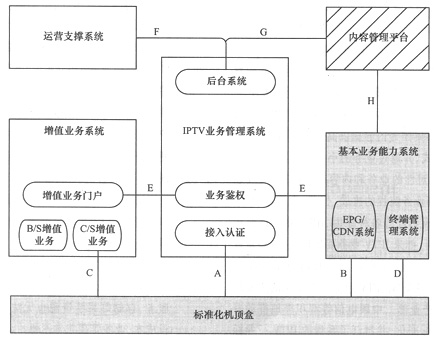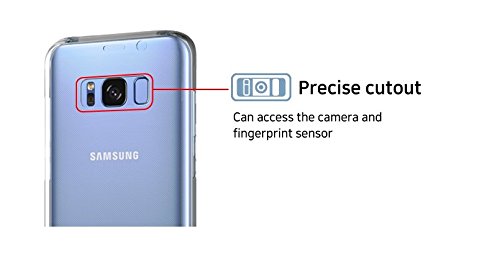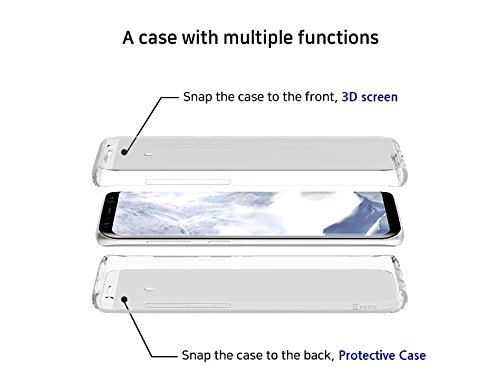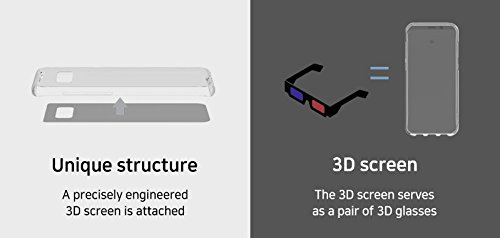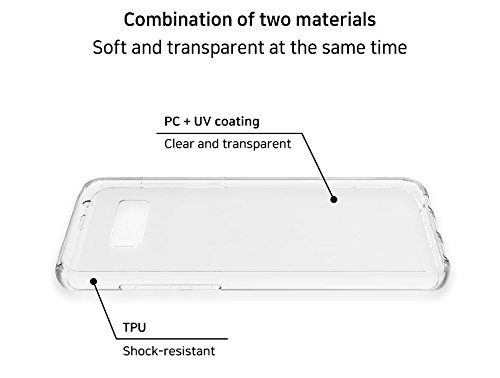introduction This article refers to the address: http:// The IPTV service will use the TV with the widest audience as the display terminal, which combines the business characteristics of the cable network and the IP network, and provides users with interactive multimedia services such as radio and television, video on demand, TV viewing, information browsing and interactive games. It is considered to be the embodiment of Triple-Play. While IPTV brings users a new TV experience, it is driven by the development of an industry. It is considered by the industry to have good development prospects and has received extensive attention. At present, fixed-line operators such as China Telecom are actively exploring the operation mode of IPTV services through cooperation with content providers such as Shanghai Media Group, which holds IPTV operation licenses, and strive to tap user needs through small-scale commercial use of services. Develop targeted services and content, and explore the challenges of triple play services to traditional telecom operators' business processes. However, due to various reasons such as IPTV service supervision and industry chain maturity, IPTV services are still in the early stage of development in China. If the IPTV service is to scale, it must first break the closedness of the IPTV end-to-end system. The current non-opening and non-standardization of the IPTV platform has become one of the main bottlenecks affecting the scale development of the IPTV service. Although the Ministry of Information Industry and China Telecom have actively promoted the standardization of IPTV end-to-end systems and formulated a series of IPTV industry standards and enterprise standards, IPTV system providers have not provided for various factors. Standardized open platform, which causes operators to have the following problems when developing IPTV services: â— The set-top box of different manufacturers and the IPTV platform cannot communicate with each other. The maturity of the set-top box products is not high. It is difficult to form a scale effect and a competitive situation in the production of set-top boxes, which makes the IPTV sales cost remain high; â— Due to the non-opening and non-standardization of the IPTV platform, the development of value-added services based on the IPTV platform is difficult and slow, which is not conducive to the rapid introduction of various types of IPTV value-added services that meet the needs of users, resulting in the same value-added services not being available nationwide. Copying and transplanting in different provinces; â— The closedness of the IPTV platform also makes it difficult for operators to introduce IPTV terminals of various types and grades, and it is difficult to effectively carry out marketing activities for different user groups; â— Due to the private nature of the communication protocol, it is not conducive to operators deploying a unified IPTV quality monitoring system in operation and maintenance. It is difficult to monitor the end-to-end IPTV service quality. â— Due to the closedness and non-standardization of the IPTV system, the systems of multiple vendors cannot be interconnected. At the same time, system resources such as streaming media services and storage cannot be shared, which increases the system construction cost and is inconvenient for business management. Therefore, for the long-term and orderly development of the IPTV service, it is urgent to establish an open IPTV system, so that different IPTV service platforms and terminals can be interconnected, and operators can quickly introduce and deploy value-added services. This paper describes in detail the architecture and key interfaces of IPTV system development from the perspective of operators, and introduces the progress and future planning of China Telecom's IPTV system opening. IPTV system open architecture and interface Considering the integrity of the system and the future development of the business, the open IPTV architecture and related interfaces are shown in Figure 1. For the convenience of description, each interface is labeled separately. As can be seen from Figure 1, the IPTV standardization architecture can be divided into independent modules such as set-top box, IPTV service management system, basic service capability system, value-added service system, content management platform, and operation support system. The functions of each interface are as follows. A: An access authentication interface between the set-top box and the service management system, used for boot access authentication and service initialization and navigation. This interface is the most basic interface related to services in all interfaces. It is also the key interface for operators to control IPTV services. It is mainly defined by operators according to their own business needs. B: The interface between the set-top box and the EPG service and the streaming media service capability system is used to provide a browser-based implementation of the service capability, and is also a key interface for interworking between the IPTV service flows. C: An interface between the set-top box and the C/S value-added service capability system for providing service capabilities based on the client. Since the value-added service is the main content of the operator's differentiation from the digital TV, the standardized C interface can help operators to quickly introduce value-added services, which is of great significance to operators. D: An interface for managing the set-top box, which is used to provide management functions such as terminal configuration, terminal monitoring, and terminal upgrade. Since the set-top box is the carrier for all the services of the user, and the number of set-top boxes is large, and the operation and maintenance cost is high, providing flexible and powerful set-top box management functions is very important for the operation and maintenance of the set-top box. E: The interface between the basic business capability, the value-added service capability system and the service management system, mainly realizes user identification and service authentication. Since the interface is an interface on the platform side, it is related to different service types. F: The interface between the operation support system and the business management system, mainly used for the transmission of information such as user opening and closing, and the submission of accounting information. Since IPTV is one of the telecommunication services, the interface mainly uses the prior art. G: The interface between the content management platform and the business management system is mainly used for service information release and service share information transfer. H: The interface between the content management platform and the business capability system for the release of business content, including program sources and metadata. As mentioned above, in the above interfaces, the two interfaces A and B serve as the main interfaces between the set-top box and the platform, and are the interfaces that need to be implemented first in the open work. The C interface is generated according to the needs of business development. In the value-added service of IPTV, in order to enhance the interactive experience of the service and strengthen the control of the business, SP will provide many services based on Java. The more common is the game-type business. In order to distinguish it from the browser service, it is called C/. S business. The C interface is the interface that implements related client calls and controls. The D interface is a management interface. The implementation of this interface is to manage the terminals of different vendors and different functions. If the set-top box is also used as a system device, then the D interface can be similarly imagined as a network management interface, and the D interface can be implemented by referring to the extension of the TR069 protocol standard. The E interface is a service authentication interface. It is used to determine whether a user has the right to access the current service capability. If a unified service management platform needs to be established in the system architecture to provide comprehensive service management, the interface needs to be unified for all service capability systems. . The F interface is mainly related to the operator's operation support system. It is related to the opening of the service, the introduction of the user and the service data. Considering that the IPTV platform is built by the province, if the interface can be defined and implemented, the IPTV system has National versatility, and no longer need to localize the business opening process. G and H are interfaces related to the content management platform. Considering the management and monitoring requirements of content in IPTV, it is necessary to establish an independent content management platform. Therefore, G and H are the publishing interfaces of the content management platform, and the G interface is used for The service package and billing information are released, and the H interface is used for the release of business content. C, E, G, and H are service-related interfaces that will be implemented as the second phase of the IPTV system's openness. The D and F interfaces are the requirements of business operations, and can be temporarily suspended. The IPTV system will be defined and implemented in the future. Set-top box key interface analysis To solve the five major problems in the IPTV closed architecture, it is necessary to provide standardized IPTV end-to-end systems through the efforts of all parties in the industry chain. Among them, the interface between the open IPTV set-top box and the platform is the key to the opening of the entire system. To this end, this paper refines the A and B interfaces, and separates the basic streaming media service capabilities from the EPG service service capabilities to form the three interfaces shown in Figure 2. As can be seen from Figure 2, in order to realize the openness and standardization of the IPTV service platform, the intercommunication between different manufacturers' set-top boxes and platforms is fundamentally realized between the set-top box and the service management platform, the streaming media service system, and the EPG service system. Standardization of 3 interfaces. Interface between the set-top box and the service management platform: used to complete service management functions such as boot user identification, application authentication, user logout, and other interactions related to service management. The bearer protocol mainly adopts HTTP Get/Post, which can be divided into set-top box boot authentication. The interface, the channel list acquisition sub-interface, the service entry list acquisition sub-interface, and the set-top box logout sub-interface are encapsulated by the browser middleware. The set-top box and the streaming media system interface are used for the interaction between the set-top box and the streaming media content distribution system, and complete functions such as on-demand, multicast, unicast time shift and multicast time shift. According to the content distribution system, it is divided into two types: the TS content distribution system interface and the ISMA content distribution system interface. Currently, the TS mode is the main implementation mode. The bearer protocol uses MPEG2-TS, RTSP, RTP, and RTCP. Specifically, it can be divided into a set-top box unicast sub-interface, a set-top box multicast sub-interface, a set-top box unicast time-shift sub-interface, and a set-top box multicast time-shift sub-interface, and is encapsulated by a browser middleware manner. The set-top box interfaces with the EPG service system: it is used for the interaction between the set-top box and the EPG service system, completes functions such as EPG resource acquisition, EPG navigation switching, and implements basic BS browsing functions. The bearer protocol adopts HTTP Get/Post, the set-top box initiates a service use request to the EPG service system, and uses a request such as HTTP Get/Post to request, and the EPG service system returns a service use response through the HTTP Response, which includes HTML and Javascript, set-top box to JS and extension. JS parses and performs the corresponding operations. After defining the bearer protocols, interactive content, and functional requirements of these interfaces, the IPTV standardization system also needs to define standardized business processes. Unified business processes can enable various platforms and terminals to unify actions in specific business processes, using the same logic. Calling the interface with the timing relationship finally solves the problem that the different terminals and platforms cannot communicate with each other. The standardization of business processes mainly includes: â— Terminal access authentication process definition; â— Access to the process definition of the EPG service; â— Access to the process definition of the streaming media on demand service; â— Access to the process definition of the live streaming service; â— Access to the process definition of the streaming media time-shift service; â— The definition of the authentication process in the use of the business. The standardization of business processes, in addition to considering the business access process under normal circumstances, should also fully consider the processing flow under various abnormal conditions to improve the integrity, reliability and stability of the standardized system. To achieve a truly open IPTV system, in addition to defining technical normative requirements, we must also consider the specific implementation steps and the distribution of benefits in all aspects of the industry chain: â— In the business model, eliminate the doubts of IPTV platform providers and form an industry chain where platform suppliers and terminal suppliers are separated and benign competition; â— In the open strategy, the opening of the IPTV platform should be business-oriented. Due to the wide range of IPTV services, including basic services such as TV broadcasting, video on demand, TV viewing, information browsing, and value-added services such as interactive games and video communications, The standardization of basic business should be completed first, and then the standardization of various value-added services should be gradually carried out. Of course, to realize the opening of the IPTV system, it is necessary not only to develop an open interface specification, but also to be led by the Ministry of Information Industry and the fixed-line telecom operators to promote the IPTV platform and terminal providers consciously through commercial interest considerations and network access detection. Develop standardized products. Only by creating a harmonious and open IPTV industry development environment can we truly promote the maturity of IPTV products. Progress in the opening of China Telecom's IPTV system The opening of the IPTV system is a key driving force for the large-scale development of IPTV services, and it is also one of the main obstacles restricting the development of IPTV services. Operators such as China Telecom have fully realized the strategic significance of developing IPTV services, and have been vigorously promoting the integration of the industry chain to jointly promote the standardization and interconnection of IPTV systems. Since 2005, China Telecom has been promoting the opening of IPTV systems by establishing corporate standards and participating in the development of international and industry standards. In 2007, China Telecom made active attempts and efforts in establishing an open IPTV system. According to the actual operation of the IPTV live network service, the 2.0 version of the IPTV standardization specification was developed, and on the basis of the standard specifications, the verification tests in the laboratory and the existing network environment were respectively carried out, which basically realized the between different manufacturers' set-top boxes and platforms. Interoperability. The major equipment manufacturers and terminal manufacturers in the industry also actively followed up the IPTV system's open work, and modified the IPTV platform and terminals according to the development specifications, and each provided standardized products. On the other hand, China Telecom also submitted the results of standardization to the China Communications Standards Association (CCSA) of the Ministry of Information Industry to promote the promotion and application of development IPTV systems from the entire industry. In 2008, with the maturity of IPTV system open technology, China Telecom will continue to open other standardized interfaces to promote a virtuous circle of the entire IPTV industry chain. The opening of IPTV system is a gradual and long-term process, which needs to be promoted from various aspects such as standard setting, system testing, and live network verification. It is believed that with the efforts of all parties in the industry chain, through the process of openness and standardization, IPTV can become a benign, industry-recognized and consistent product with continuous and developmental capabilities and commercialization capabilities. Come to the real triple play new experience.
Galaxy S9+ Snap3D Case is a Screen Protective Case for Android Samsung Galaxy S9+ to Watch 3D Without 3D Glasses ,3D Personal Viewer,
It just look like a clear phone case in shape, but if you put it on the front of your screen, it will gives you a great experience. You can watch 3D movies and the scene, the animals will fly out of your phone, very magic!
3D Glasses are now a thing of the past thanks to the Snap 3D case. Our proprietary technology tracks user`s viewing position and stabilizes the screen accordingly to enable real 3D viewing experiences without glasses.
This type is Compatible with Galaxy S9+
If you want to have a rest you can just put it back one your phone, then it Acts as a fully functional Screen Protector offering protection from keys, scratches, falls, cracks, tools and more.
GUARANTEE: If you aren`t experiencing a true 3D experience, we will buy this product back from you - no questions asked. Lifetime Guarantee. Love it - or your money back. We are THAT confident in this product.
Galaxy S9+ Snap3D,Snap3D For Galaxy S9+,Galaxy S9+ Snap 3D Viewer,Galaxy S9+ Snap3D Case iSID Korea Co., Ltd , https://www.isidsnap3d.com